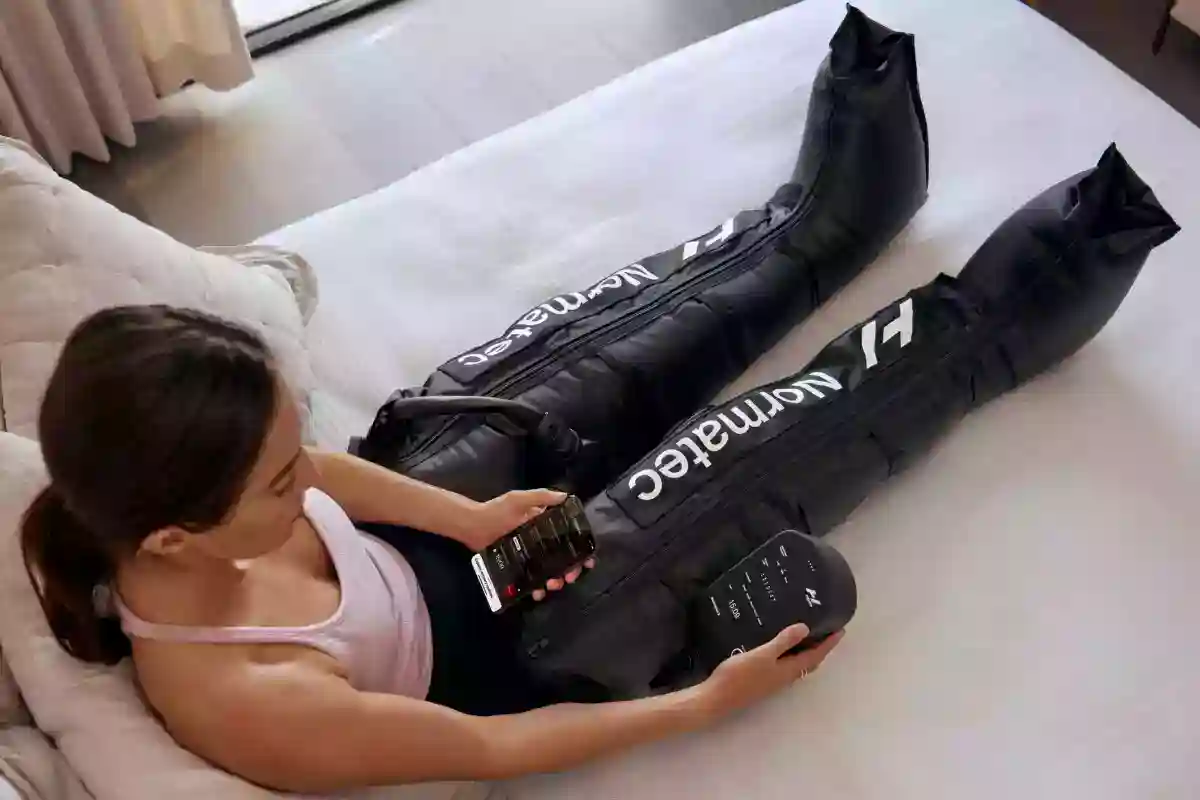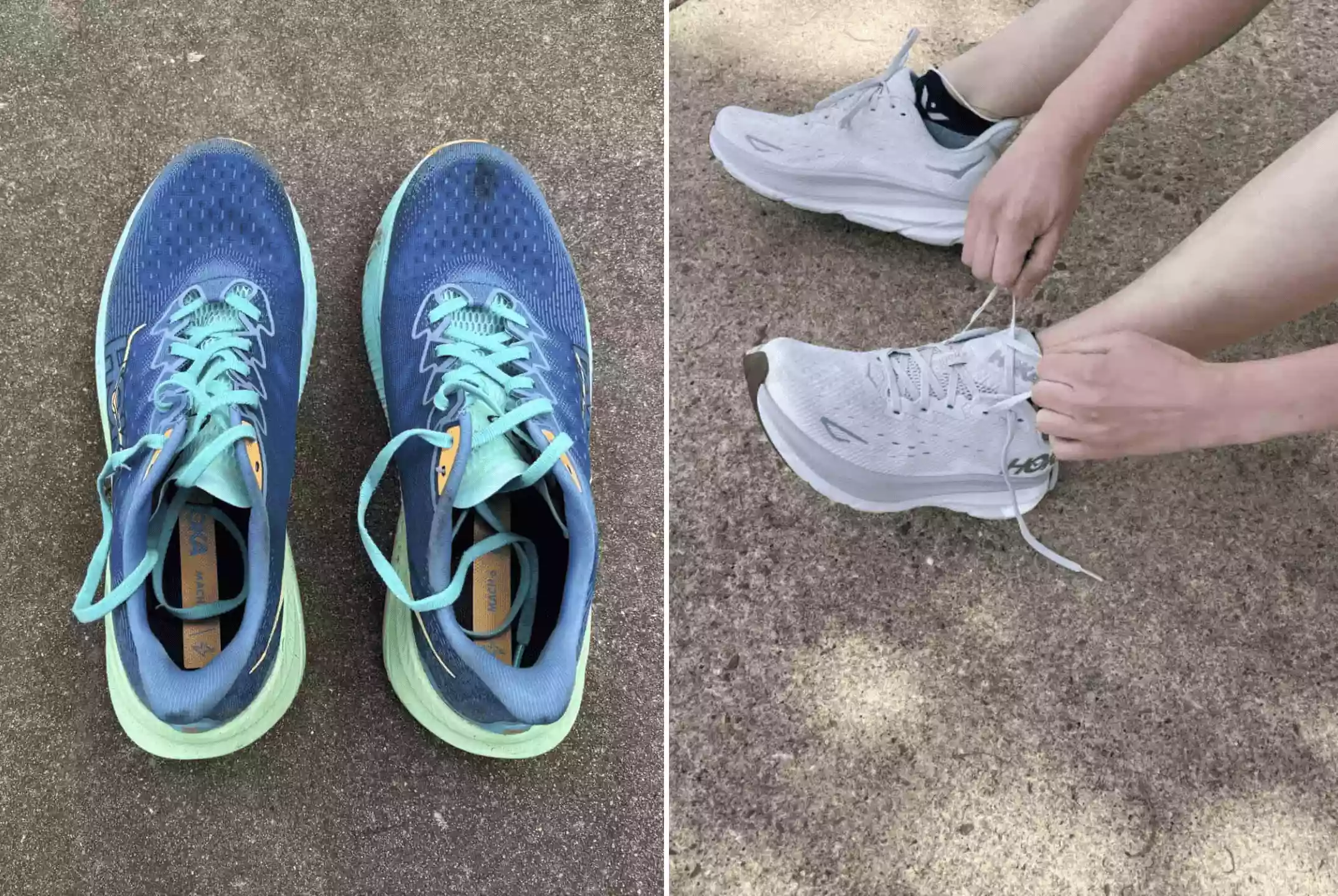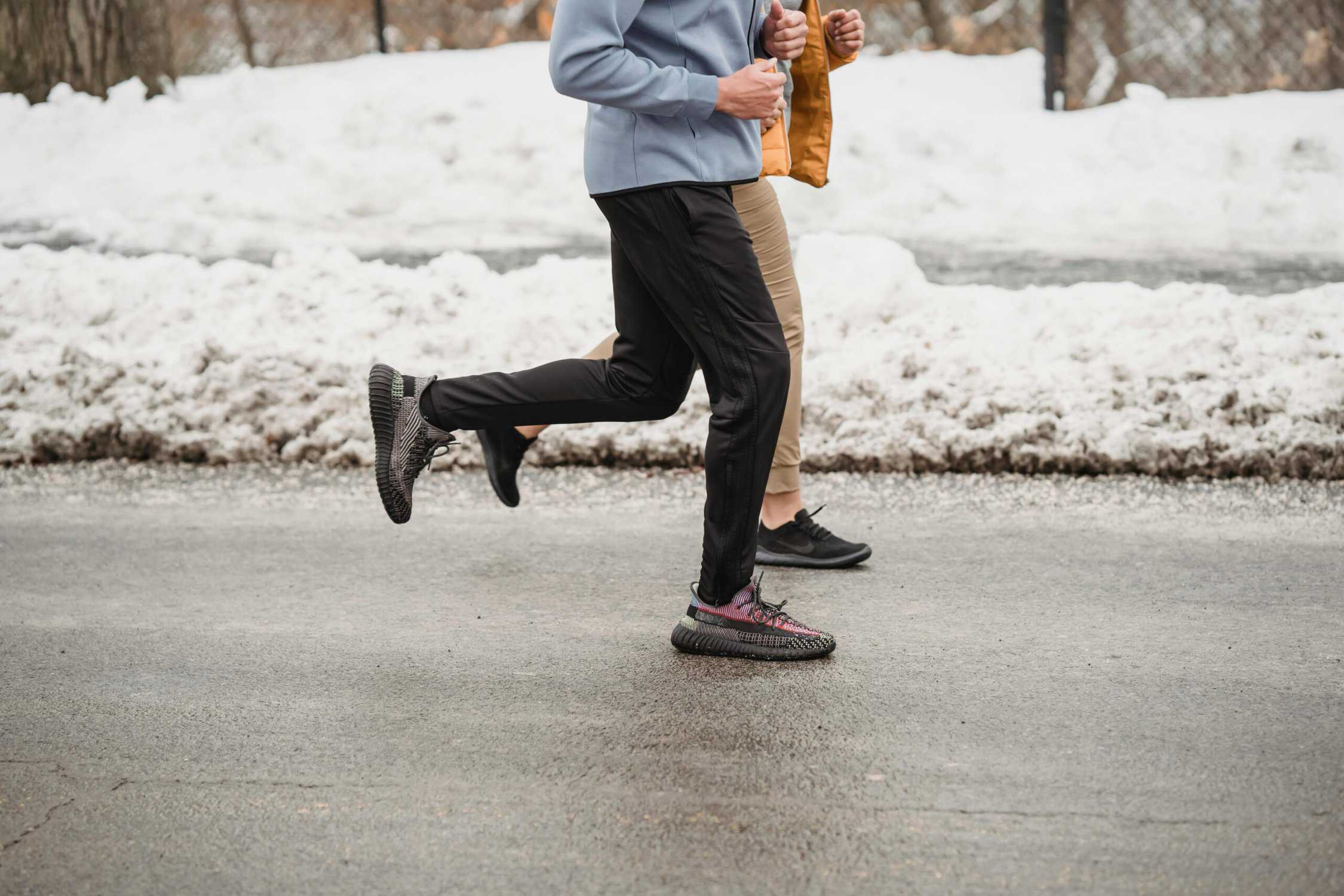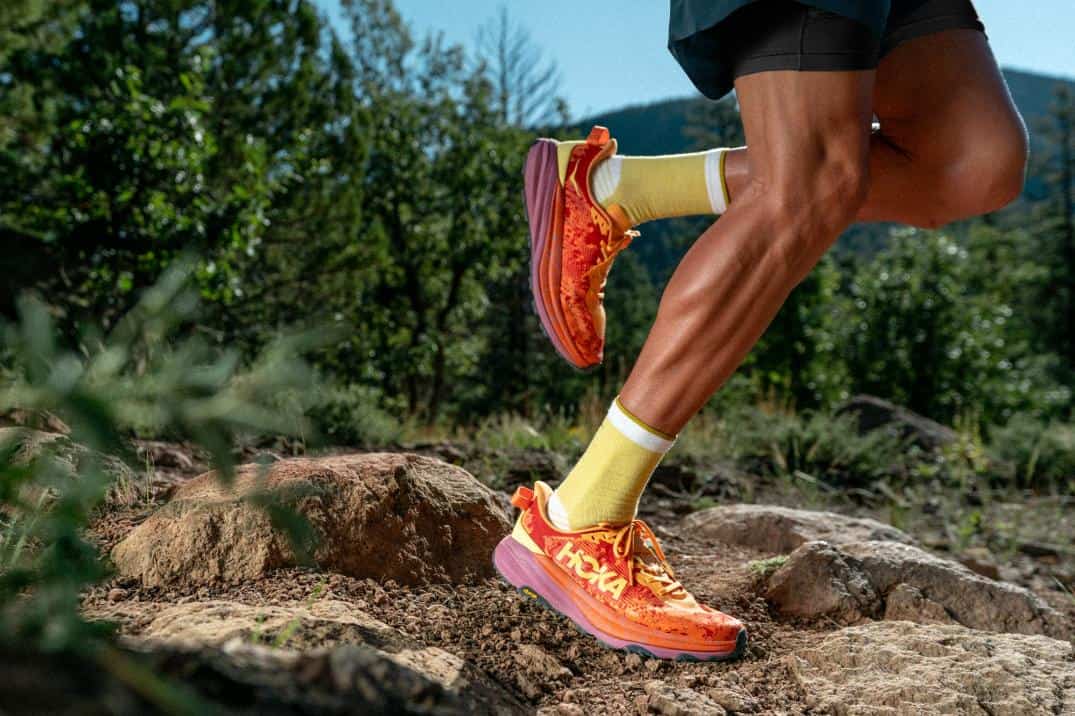Recovery is as important for your running performance as training. It’s the other side of the coin. The harder and further you train, the more important it is for your body to recover before the next.
Over time of course, your body will repair itself. However, over 18 weeks of training for a half marathon, you may find your joints and muscles are annoyingly sore before each run. While protein-rich diets, pre- and post-session stretching, and sleep set a foundation for your recovery, if you’re having trouble with soreness and stiffness, these products are useful to incorporate.
- Best Recovery Footwear: Velous Footwear
- Best Percussive Therapy: Theragun Elite
- Best Compression Therapy: Hyperice Normatec 3
- Best Foam Roller: TriggerPoint Grid Foam Roller
- Best Massage Stick: The Stick Travel Stick
- Best Recovery Roller: R8 Roll Recovery
For a deeper dive on all things running recovery, we’ve debunked some of the most common running recovery myths.
Best Recovery Footwear: Velous Footwear
The feet are the window into the runner’s sole. (Pun intended.)
And here’s a no-brainer: you land on your feet when you run. While your feet absorb the initial impact of the step, pressure is distributed from the feet throughout your legs.
Since the pandemic, reports of heel pain have increased among both runners and non-runners alike. As a result, recovery footwear is high in demand.. Velous is an active recovery footwear brand designed to restore, revive, and re-energize your feet before and after your runs.
The shoes took two years to develop and help your feet, ankles, knees, and legs recover from training with a three-part, patent-pending Tri-Motion Technology solution and proprietary foam formula. The shoes were designed to adapt to the gait patterns of the wearer, providing everything from an optimal cushion in the heel, support through the arch, and flexibility at the toe.
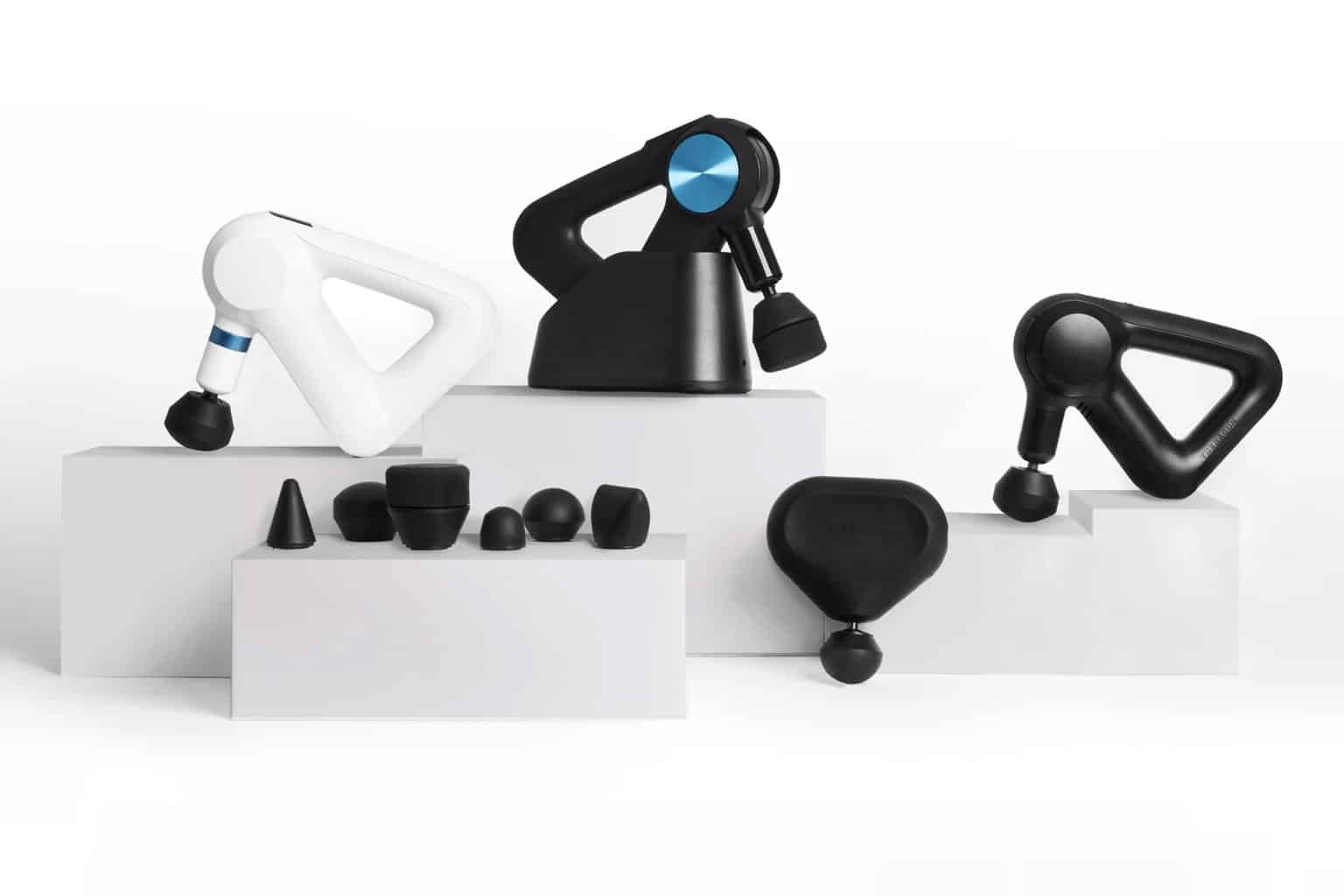
Best Percussive Therapy: Theragun Elite
Percussive therapy is relatively new science in the field of running recovery. It involves rapid, repetitive pressure that forcefully vibrates the soft tissue muscles.
The promise of percussive therapy is that muscles build up fascia—layers of tissue and fluid that stabilize your bones and muscles—as well as lactic acid from exercise, and percussion forces fibers to release the buildup. When it comes to percussive therapy devices there are three factors to consider:versatility, sound, and price. You’ll have to make a decision about which are most important to you.
For those who need a reliable, powerful, and quiet device that can work just about anywhere, the Theragun Elite is a must for runners. It’s powerful, offers four different attachments to fit every muscle, and five different speeds.
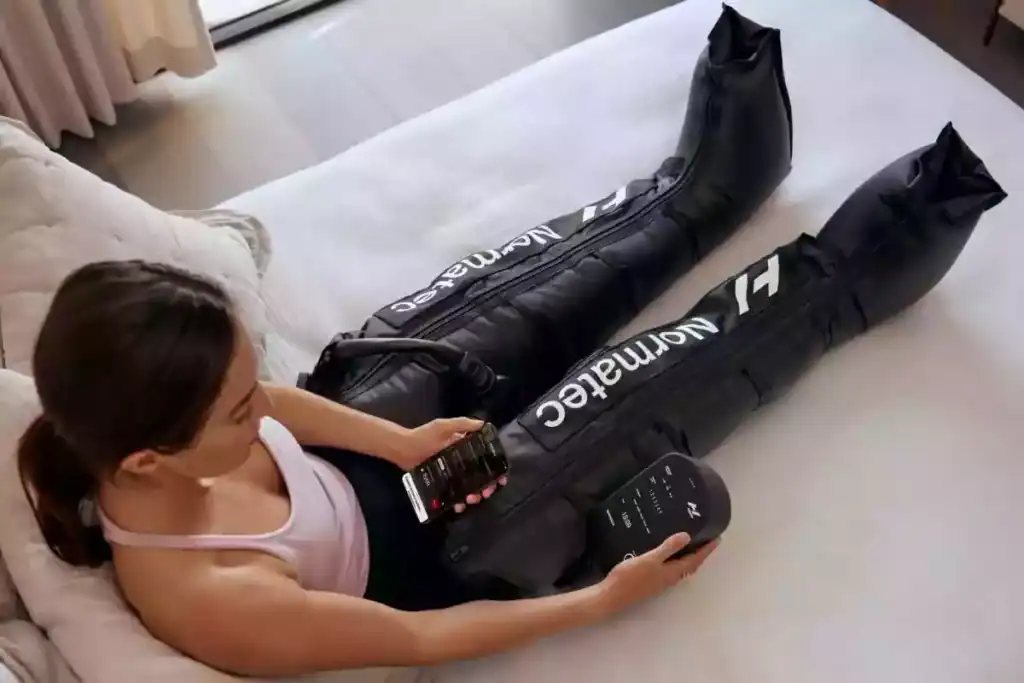
Best Compression Therapy: Hyperice Normatec 3
For a holistic and balanced recovery, percussive therapy’s counterpart is compression therapy.
Compression therapy is targeted, controlled pressure that increases blood flow to the legs. This increased blood flow helps circulate and remove metabolic waste from your system faster. All running produces microtears, so to heal, the body sends nutrition and blood to the region. However, an unfortunate byproduct of this natural repair process is swelling.
Compression therapy reduces the body’s inflammation and also allows swelling to heal quicker. The only downside? The price. A compression therapy device will run you over $500 at its cheapest.
But for those with the resources, this knowledge can be a gamechanger.

Best Foam Roller: TriggerPoint Grid Foam Roller
For runners on a budget, foam rolling is a less expensive way to access benefits of both compressive and percussive therapy. If you have a floor and legs, you can foam roll.
The foam roller works in two ways – both in aiding warm up and post-run. Before your run, foam rolling helps loosen up tissues and joints to increase range of motion, protecting you from injury during a workout. After a run, foam rolling targets the fascia and lactic acid release, minimizing post-workout soreness, otherwise known as Delayed Onset Muscle Soreness (DOMS).
Though it may be harder to pack in a travel bag, foam rolling is quiet and likely won’t keep your spouse awake! TriggerPoint is firm and textured in a way to maximize the recovery without the poking and prodding of some more aggressive brands.
TriggerPoint Grid Foam Roller – $26.24

Best Massage Stick: The Stick Travel Stick
Massage sticks offer all the same benefits of the foam roller with a better ability to target specific muscles and more versatility. Though a foam roller allows you to apply the weight of your entire body to the process, a massage stick is limited by the amount of force you or your partner can apply to the roll.
The Stick Travel Stick is one of the best-reviewed products on the market because of its small spindle design, which aids even muscles with the most contours.
The Stick Travel Stick – $23.95
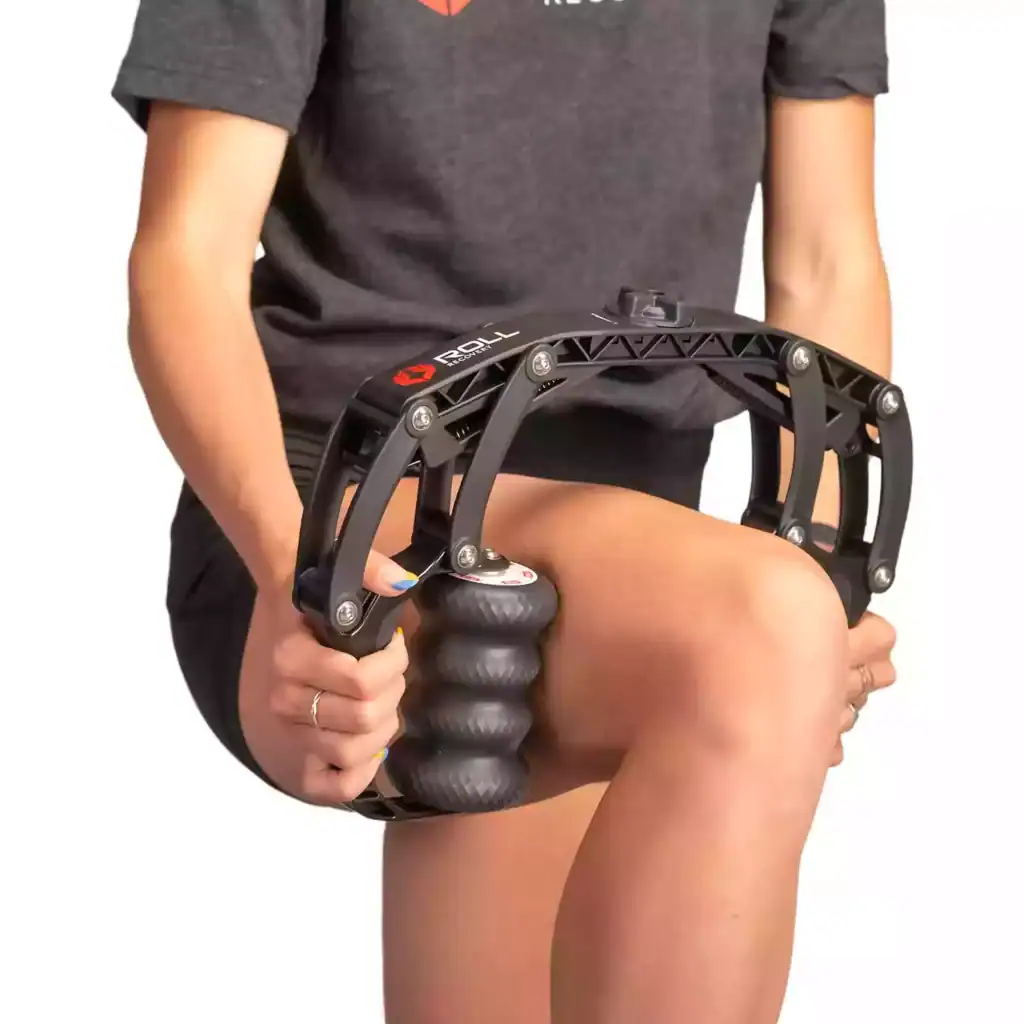
Best Recovery Roller: R8 Deep Tissue Massage Roller
If you keep up with professional sports, you may have noticed elite athletes roll the R8 across their thighs and calves before a training session.
The R8 is an alternative to the foam roller and massage stick, but with a whole new set of bells and whistles. The product has spring technology to apply pressure while also being responsive to the contours of muscles, helping to warm up muscles before a run. Its rollers are also shaped to reduce inflammation and swelling.
Though the R8 comes with a considerable price tag, if you can’t stand foam rolling on the floor or if a massage stick is too analogue for you, this may be your best match.
Running Recovery Best Practices
If you’re interested in running recovery products, start with best practices with sleep, nutrition, and stretching before you invest too heavily. If you’re sleeping two hours a night, even foam rolling every day won’t allow your body to recover well enough to perform optimally.
When in doubt, follow the Four R’s of Recovery:
Rehydrate: Between 64 and 128 oz per day of water.
Refuel: Lean proteins like chicken and fish help repair muscles. Carbohydrates like quinoa and sweet potato help store fuel in your muscles for workouts. This article provides guidance on a complete diet plan.
Repair: Dynamic stretching before workouts, static stretching after workouts.
Rest: Get between 6 and 8 hours of sleep per night.
–
This article was produced in partnership with Velous Footwear.

